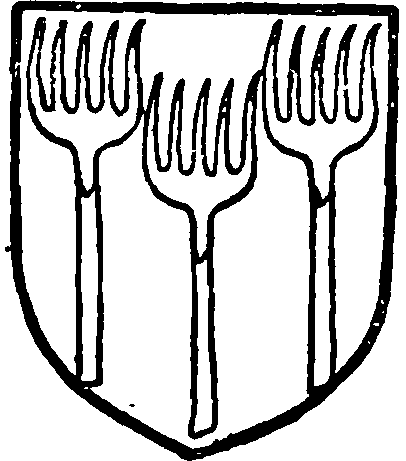A History of the County of Lancaster: Volume 6. Originally published by Victoria County History, London, 1911.
This free content was digitised by double rekeying. All rights reserved.
'Townships: Worthington', in A History of the County of Lancaster: Volume 6, ed. William Farrer, J Brownbill (London, 1911), British History Online https://prod.british-history.ac.uk/vch/lancs/vol6/pp222-224 [accessed 19 April 2025].
'Townships: Worthington', in A History of the County of Lancaster: Volume 6. Edited by William Farrer, J Brownbill (London, 1911), British History Online, accessed April 19, 2025, https://prod.british-history.ac.uk/vch/lancs/vol6/pp222-224.
"Townships: Worthington". A History of the County of Lancaster: Volume 6. Ed. William Farrer, J Brownbill (London, 1911), British History Online. Web. 19 April 2025. https://prod.british-history.ac.uk/vch/lancs/vol6/pp222-224.
In this section
WORTHINGTON
Wurthington, 1220; Worthinton, 1242; Worthington, 1290; Werthinton, 1302. The 'g' seems to be inserted or omitted indifferently.
This triangular township, lying between the Buckow and Bradley Brooks, has an area of 659 acres. (fn. 1) The surface rises to about 280 ft. near the north-west corner. The Buckow Brook falls into the Douglas, which at this point has been formed into reservoirs for the Wigan Corporation Water Works. The population numbered 258 in 1901.
The principal road is that from Wigan to Chorley. The London and North Western Company's line from Wigan to Preston passes through the western corner of the township; there are some colliery railway lines.
The soil is clay and gravel, with subsoil of sand and gravel; wheat and oats are grown, and some of the land is in pasturage.
In 1666 there were in the township only twentythree hearths charged to the hearth tax. The largest house, Mr. Worthington's, had four hearths. (fn. 2)
Manor
In 1212 it was found that WORTHINGTON and Coppull were held of the lord of Manchester by the service of half a knight's fee, Thomas de Worthington being the immediate tenant. (fn. 3) Suit to the court of Manchester was required, the lord of Worthington being one of the judges (fn. 4); the grith-serjeant also could demand puture, the township being in the upper bailiwick of the barony. (fn. 5) The connexion with Manchester continued to be recognized, at least nominally, down to the 17th century. (fn. 6)
Thomas de Worthington's tenure was 'of ancient time' in 1212, but, though the family continued to hold the manor until the end of the 17th century, little is known of their history. Thomas, called son of Robert de Worthington, gave a part of his land to Cockersand Abbey. (fn. 7) In 1227 Robert Grelley agreed with Thomas de Worthington as to the suit due to the court of Manchester. (fn. 8) Thomas's son William de Worthington held the half-fee in 1242, (fn. 9) and as late as April 1282. (fn. 10) Soon afterwards Hugh de Worthington appears, (fn. 11) but he did not hold the manor long, William de Worthington contributing to the aid of 1302 for half a fee, except the tenth part, in Worthington. (fn. 12) William, who appears to have had four sons or more, (fn. 13) was still in possession in 1320, (fn. 14) and perhaps in 1332, (fn. 15) but his son Hugh de Worthington and John de Heaton paid in 1346–55 to the aid in respect of the half-fee in Worthington and Heaton. (fn. 16) The wardship of the manor and lands of Hugh de Worthington and of John his son and heir was in 1369 granted to Thomas de Worthington and Nicholas his brother. (fn. 17) William son of Hugh, however, seems to have succeeded, (fn. 18) and the manor descended to Hugh Worthington, who held it in the time of Edward IV by the ancient services. (fn. 19) Pedigrees were recorded in 1613 (fn. 20) and 1664, (fn. 21) and the sale of the manor took place between 1682 and 1690. (fn. 22) The purchaser was Thomas Clayton, and the manor has descended, with the adjoining Adlington, to Mr. J. R. B. Clayton Dawbeny. (fn. 23) Sir Richard Clayton was almost sole landowner in 1783. (fn. 24)

Worthington. Argent three dung-forks sable.
WORTHINGTON HALL, now a farm-house, stands on the east side of the high road from Wigan to Chorley, 3½ miles north of the former town and about 1¼ miles north-east of Standish Church. It is a rather lofty two-story building very much altered and renewed, the back and end walls having been rebuilt in stone and brick, the roof covered with blue slates, and the interior almost entirely modernized. The front, however, which faces north, retains a good deal of the original half-timber work, with a cove at the line of the floor and under the eaves. The hall was formerly lit by a long window of thirteen lights, placed high in the wall, but now built up. Much of the work is of a somewhat elaborate character, the sill at the level of the first floor being richly carved. On the head of the door, which is slightly arched, are the name and date 'Edwarde Worthington 1577,' and in one of the spandrels the initials M.O. At the west end of the front a short low wing has been erected against the main building, and a portion of the front at the east end has been rebuilt in stone and brick. The interior shows some of the old oak construction, but is otherwise uninteresting.
There are but few references to the place in the plea rolls (fn. 25) or inquisitions. (fn. 26) A manor of Worthington appears to have been claimed by Thomas Langtree of Langtree in 1653. (fn. 27)
North Hall was the property of James Hodson of Ellerbeck in Duxbury, and descended to the late Lord Cardwell, whose trustees are the present owners. (fn. 28)
Lydia Rycroft of Aspull in 1717, as a 'Papist,' registered her life estate in Coppull mill bridge tenement. (fn. 29)